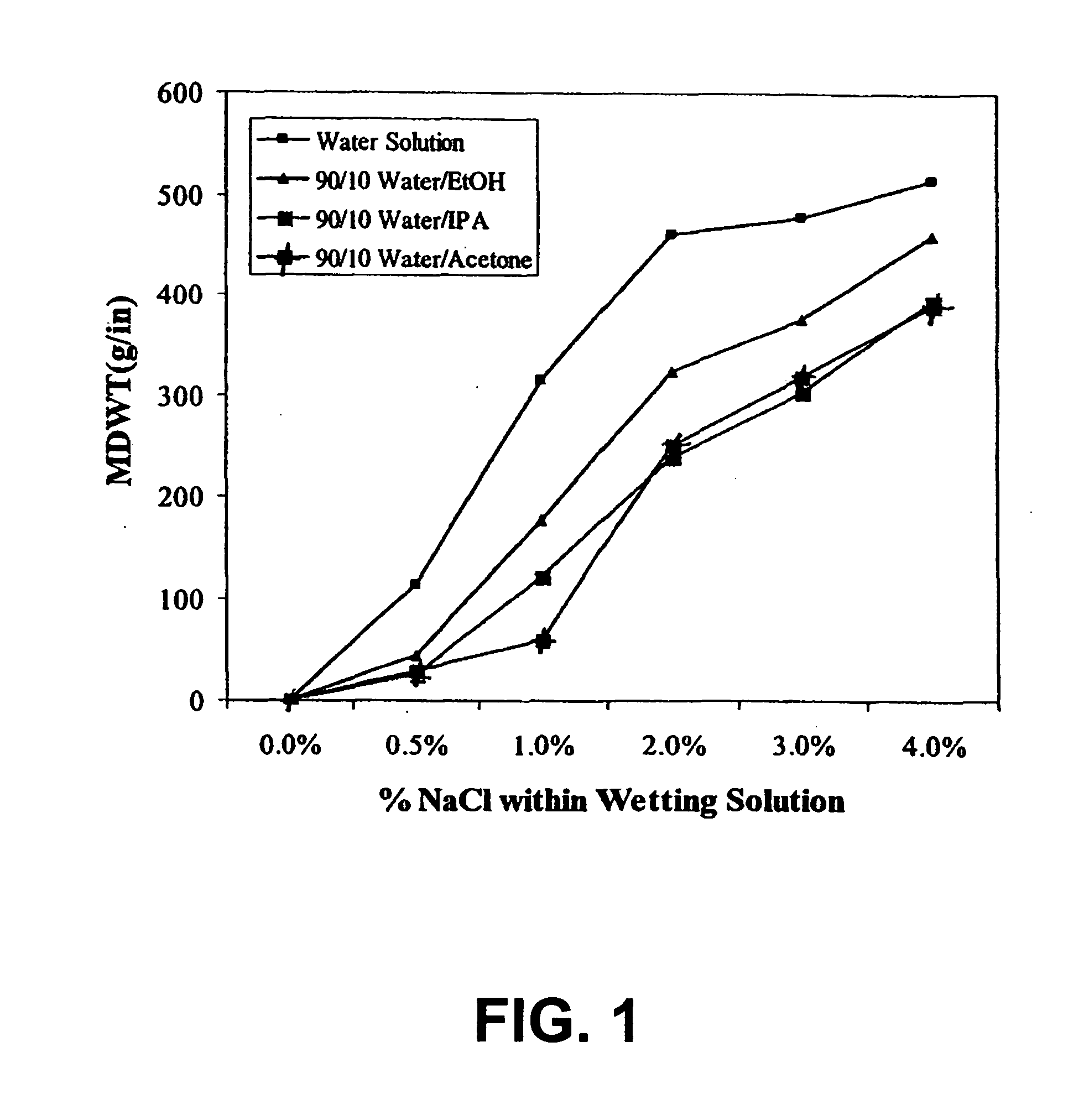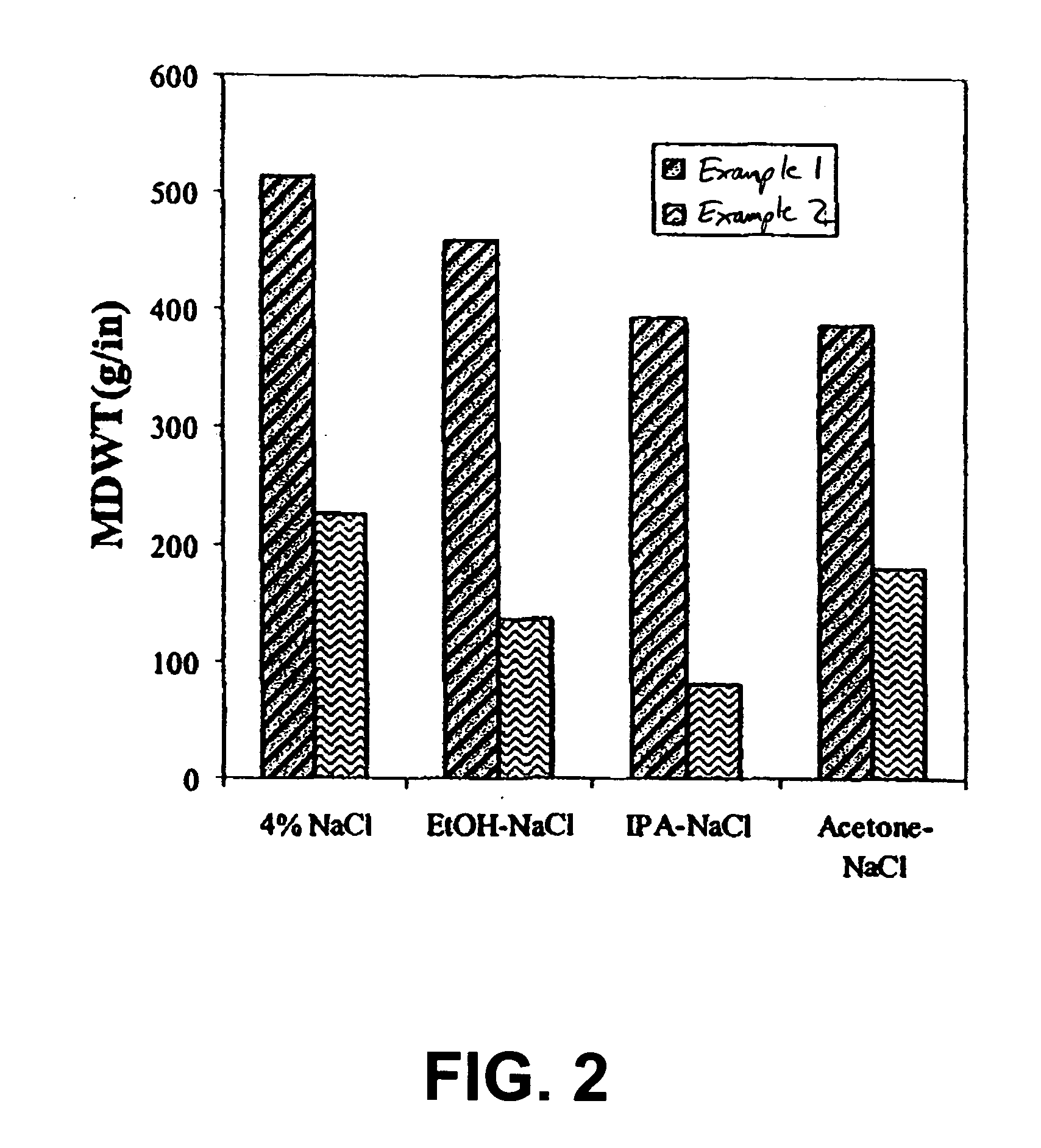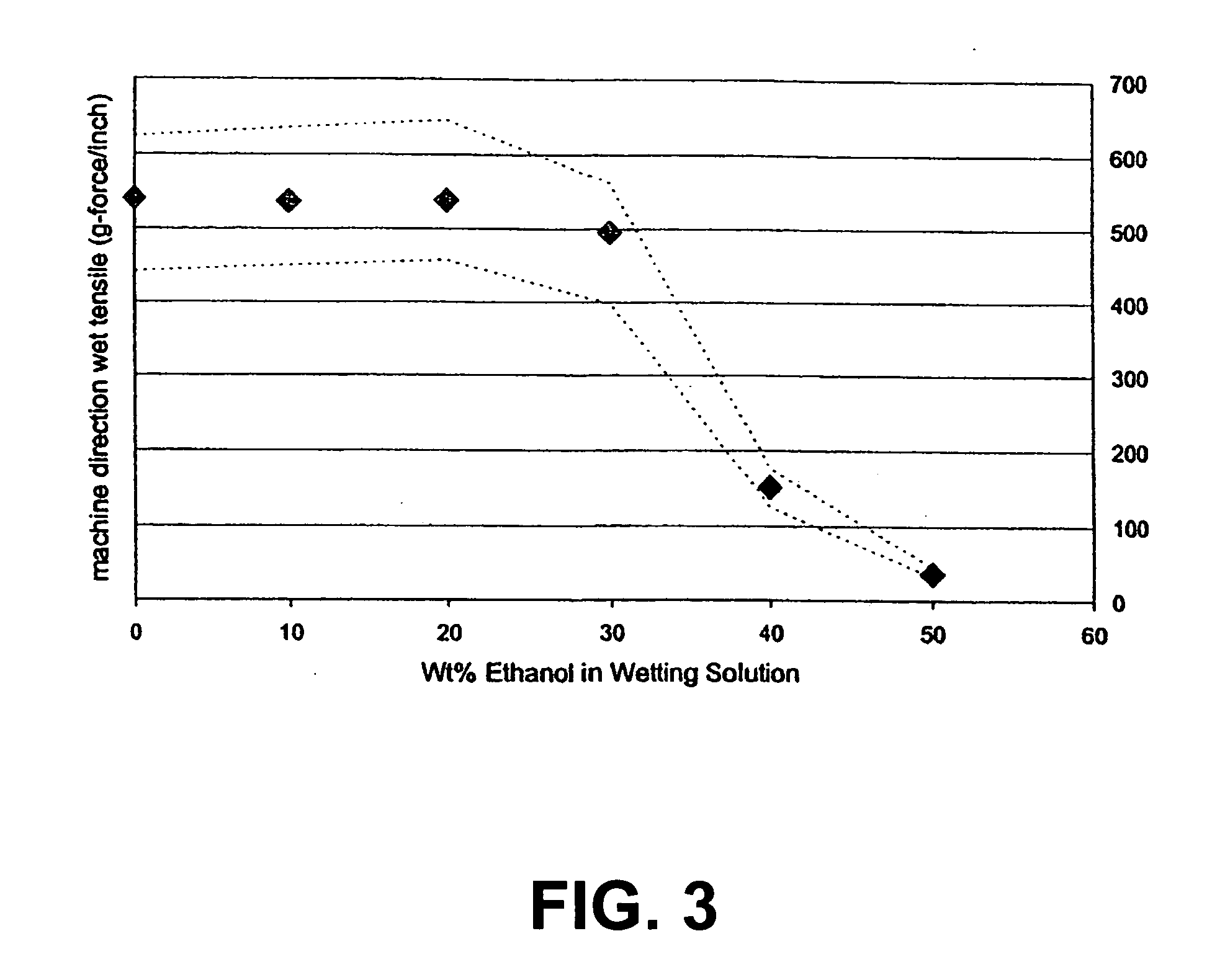Water-dispersible wet wipe having mixed solvent wetting composition
a wet wipe and solvent technology, applied in the direction of pharmaceutical delivery mechanism, bandages, hair cosmetics, etc., can solve the problems of inability to readily dissolve or disintegrate in water, and inability to disintegrate in a landfill
- Summary
- Abstract
- Description
- Claims
- Application Information
AI Technical Summary
Benefits of technology
Problems solved by technology
Method used
Image
Examples
example 1
Binder Composition Containing Cationic Copolymer
[0120] A cationic acrylate polymer was synthesized in a 75 / 25 acetone / water mixture at approximately 30% total monomer solids. Vazo-52 (DuPont) was utilized as a free-radical initiator. Acetone (VWR, Westchester, Pa.) 399 g and deionized (DI) water, 125 g, were charged into a 3 L four-neck round bottom flask. The flask was cooled in an ice bath and bubbled with nitrogen for 20 minutes to eliminate oxygen. The reaction flask was heated to reflux (approximately 60° C.) prior to adding the monomer feeds and kept under nitrogen during reaction. ADAMQUAT MC-80 (Atofina Chemicals, Philadelphia, Pa.), 39.6 g, was diluted with 42.0 g of DI water and bubbled with nitrogen as it was fed into the reaction flask. Methyl acrylate (Atofina Chemicals, Philadelphia, Pa.), 267.7 g, and Vazo-52, 0.6 g, were dissolved in 126.1 g of acetone. This solution was cooled in an ice bath and bubbled with nitrogen as it was fed into the reaction flask. Monomer s...
example 2
Binder Composition Containing Anionic Copolymer
[0121] An anionic copolymer was prepared by the solution polymerization of a mixture of monomers. The mixture contained 4 mole percent 2-acrylamido-2-methyl-1-propanesulfonic acid (AMPS), 22.5 mole percent butyl acrylate (BA) and 10.5 mole percent 2-ethylhexyl acrylate (EHA). The monomers were dissolved in a 90:10 mixture of acetone and water, and free radical polymerization was conducted at a temperature of 55-58° C. in the absence of chain transfer agent. The initiator was Vazo-52, which was present at a concentration of 0.3 mole percent relative to the total monomers. Total polymer solids during the reaction ranged between 20 wt % and 25 wt %. The temperature of the reaction mixture was maintained for 6 hours, after which an equimolar amount of sodium hydroxide relative to the AMPS was charged to the mixture. Mixing was continued for an additional 1 hour, and the reaction mixture was then concentrated by rotary evaporation.
[0122] A...
example 3
Formation of Fibrous Substrates
[0123] A weak, thermally-bonded air-laid (TBAL) nonwoven test substrate was fabricated from Weyerhauser NF405 wood pulp and KoSA T-255 binder fibers. The binder fiber had a polyester core and a polyethylene sheath that melts at approximately 130° C. The air-laid web was formed using approximately 4% binder fiber and thermally bonded above the melting temperature of the sheath. The TBAL basesheet had an average basis weight of 51 gsm and an average caliper of 1.0 mm.
[0124] A uniform and consistent amount of the binder composition of Example 1 or Example 2 was applied to the substrate via a pressurized spray unit. This handsheet spray unit was designed to closely resemble the operation of a commercial airlaid machine using liquid or emulsion binders, but on a much smaller scale. The equipment was enclosed in a small-framed housing, which could be placed under a laboratory hood. The unit had a stationary sample holder (10″×13″) in the center of the unit...
PUM
| Property | Measurement | Unit |
|---|---|---|
| Fraction | aaaaa | aaaaa |
| Hydrophobicity | aaaaa | aaaaa |
| Wetting tension | aaaaa | aaaaa |
Abstract
Description
Claims
Application Information
 Login to View More
Login to View More - R&D
- Intellectual Property
- Life Sciences
- Materials
- Tech Scout
- Unparalleled Data Quality
- Higher Quality Content
- 60% Fewer Hallucinations
Browse by: Latest US Patents, China's latest patents, Technical Efficacy Thesaurus, Application Domain, Technology Topic, Popular Technical Reports.
© 2025 PatSnap. All rights reserved.Legal|Privacy policy|Modern Slavery Act Transparency Statement|Sitemap|About US| Contact US: help@patsnap.com



